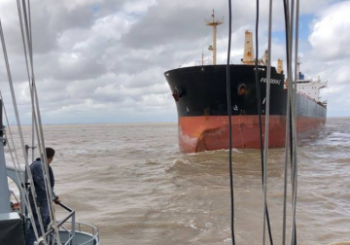
By Jite Eriabie
Vessel operating costs are expected to increase in both 2017 and 2018, according to the latest survey by international account and shipping consultant Moore Stephens.
Repairs & maintenance and spares are the cost categories which are likely to increase most significantly in each of the two years.
The survey, based on responses from key players in the international shipping industry, predominantly shipowners and managers in Europe and Asia, revealed that vessel operating costs are likely to rise by 2.1% in 2017 and by 2.4% in 2018.
The cost of repairs & maintenance is expected to increase by 2.0% in both 2017 and 2018, while expenditure on spares is predicted to rise by 2.0% in 2017 and by 1.9% in 2018. Drydocking expenditure, meanwhile, is expected to increase by 1.7% and 1.8% in 2017 and 2018 respectively.
The survey revealed that the outlay on crew wages is expected to increase by 1.7% in each of the years under review, with other crew costs thought likely to go up by 1.6% in 2017 and 1.5% in 2018.
The increase in expenditure for lubricants is expected to be 1.6% in both 2017 and 2018. Meanwhile, projected increases in stores are 1.5% and 1.7% in the two years under review, while management fees are expected to rise by 0.7% and 1.0% in 2017 and 2018 respectively.
The cost of hull and machinery insurance is predicted to rise by 0.5% and 1.0% in 2017 and 2018 respectively, while for P&I insurance the projected increases are 0.7% and 1.1% respectively.
The predicted overall cost increases were highest in the offshore sector, where they averaged 4.8% and 3.8% respectively for 2017 and 2018. By way of contrast, predicted cost increases in the container ship sector were just 1.1% and 0.8% for the corresponding years.
Operating costs for bulk carriers, meanwhile, are expected to rise by 1.9% in 2017, and by 2.4% the following year, while the corresponding figures for tankers are 2.1% and 2.7%.
“Crew costs are 60% of our operating expenditure, and weigh heavily when there is high demand for – but a limited supply of – manpower and when employers are required to meet increasingly onerous requirements,” a respondent is quoted as saying.
“Most shipping companies, but especially those operating tankers and chemical and gas carries, are facing the prospect of increases in costs through 2018 for hiring qualified crew,” another respondent added.
The increasing cost of regulatory compliance was referenced by a number of respondents.
“Retrofitting vessels with technology which has not been fully vetted for compliance with existing and new regulation can destroy cashflow,” another respondent said.
Respondents were asked to identify the three factors that would most affect operating costs over the next 12 months., Overall, 21% of respondents (similar to last year’s survey) identified finance costs as the most significant factor, followed by crew supply, which stood at 19% and displaced competition in second place.
“Predicted increases in operating expenditure are a matter of concern for any industry, and particularly one such as shipping in which a range of factors have conjoined in recent years to inhibit (and, in some cases, eradicate) profit margins. But shipping has seen a lot worse. If it does transpire that operating costs rise by 2.4% in 2018, for example, that will still be less than one-sixth of the actual operating cost increases absorbed by the industry ten years previously,”Richard Greiner, Moore Stephens Partner, Shipping & Transport, says.
“It is significant that, for the first time, new regulations were included in the list of factors which respondents could cite as most likely to influence the level of operating costs over the next 12 months. It was even more significant, perhaps, that 15% of respondents did indeed identify the cost of regulatory compliance as a major consideration when weighing future operating cost increases. The Ballast Water Management convention, now with an extended implementation window, is still potentially the most expensive item on the menu, but by no means the only one. Tellingly, one respondent referred to new regulations which ‘most of the time are unclear and indefinite.’
“Elsewhere, there were some interesting predicted cost increases in the individual market sectors. The offshore industry, for example, is predicted to be facing increases of 3.5% in crew wages for 2018, compared to the 1.4% predicted for bulkers and the 0.7% for container ships. Indeed, the offshore sector is facing the biggest increases in operating costs in the next two years in every category of expenditure covered by the survey.
“Offshore is going to be a challenging sector for operators and investors alike for some time to come, and the survey reveals exactly why a year can be a long time in shipping.”